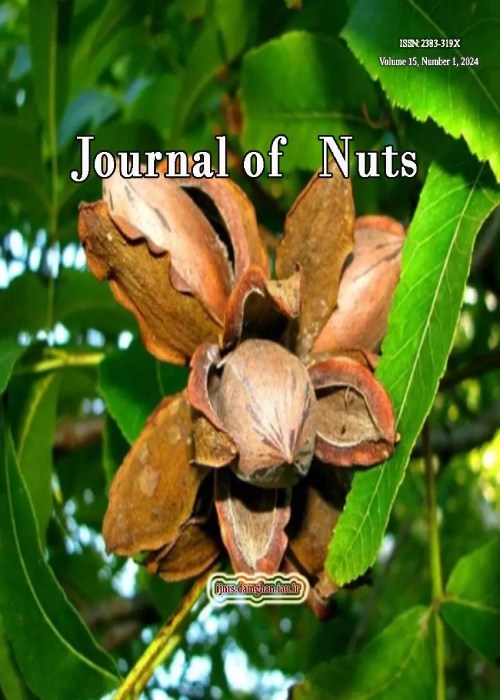Changes in Drought Tolerance Mechanism at Different Times of Stress and Re-hydration in Hybrid Pistachio Rootstock
Author(s):
Article Type:
Research/Original Article (دارای رتبه معتبر)
Abstract:
Drought is one of the main important adverse environmental events, certainly has an impact on plant growth and development. Pistachio is cultivated in areas where soil water deficits and salinity conditions are higher than normal. In most orchards, deficit irrigation is a common practice. There is only limited understanding of the physiological mechanisms pistachio uses to survive in drought. Many adaptive strategies have been developed in plants for dealing with water stress. The objective of the present study was to evaluate the effect of drought stress on the photosynthetic, physiological and biochemical parameters in one-year-old seedlings of 12 pistachio hybrids. Therefore, a greenhouse experiment was carried out to assess the effects of two drought stress treatments (drought stress and full-irrigation) for 40 days with a subsequent two weeks’ recovery period and several parameters (pigments (total chlorophyll, anthocyanins and carotenoids), internal CO2 concentration (Ci), chloride (Cl-) ions and fluorescence parameter) were evaluated at four different times (beginning, middle and end of stress and then recovery). After the end of the stress period, the seedlings were irrigated for two weeks. Results revealed that the drought stress treatments led to a change in the studied parameters and the mechanism of drought tolerance was variable at different times. Pistacia atlantica hybrid, P. vera “Sarakhs” and P. vera “Shasti” hybrid rootstocks had the highest water use efficiency; P. vera “Sarakhs” hybrid, P. vera “Khanjari” hybrid and P. vera “Badami” hybrid had the highest Cl- and mesophyll efficiency. P. atlantica and P. vera “Khanjari” had the highest anthocyanins and carotenoids. P. vera “Shasti”, P. vera “badami”, P. mutica and P. mutica hybrid rootstocks have been able to withstand drought stress by increasing the amount of K+ ion and maintaining gas exchanges. The results also showed that the response of the rootstocks to rehydration was different. Seedlings that recovered well after rehydration had a higher tolerance threshold. The “Khanjari” cultivar was recovered better than the others.
Keywords:
Language:
English
Published:
Journal of Nuts, Volume:12 Issue: 4, Autumn 2021
Pages:
333 to 360
magiran.com/p2356445
دانلود و مطالعه متن این مقاله با یکی از روشهای زیر امکان پذیر است:
اشتراک شخصی
با عضویت و پرداخت آنلاین حق اشتراک یکساله به مبلغ 1,390,000ريال میتوانید 70 عنوان مطلب دانلود کنید!
اشتراک سازمانی
به کتابخانه دانشگاه یا محل کار خود پیشنهاد کنید تا اشتراک سازمانی این پایگاه را برای دسترسی نامحدود همه کاربران به متن مطالب تهیه نمایند!
توجه!
- حق عضویت دریافتی صرف حمایت از نشریات عضو و نگهداری، تکمیل و توسعه مگیران میشود.
- پرداخت حق اشتراک و دانلود مقالات اجازه بازنشر آن در سایر رسانههای چاپی و دیجیتال را به کاربر نمیدهد.
In order to view content subscription is required
Personal subscription
Subscribe magiran.com for 70 € euros via PayPal and download 70 articles during a year.
Organization subscription
Please contact us to subscribe your university or library for unlimited access!


